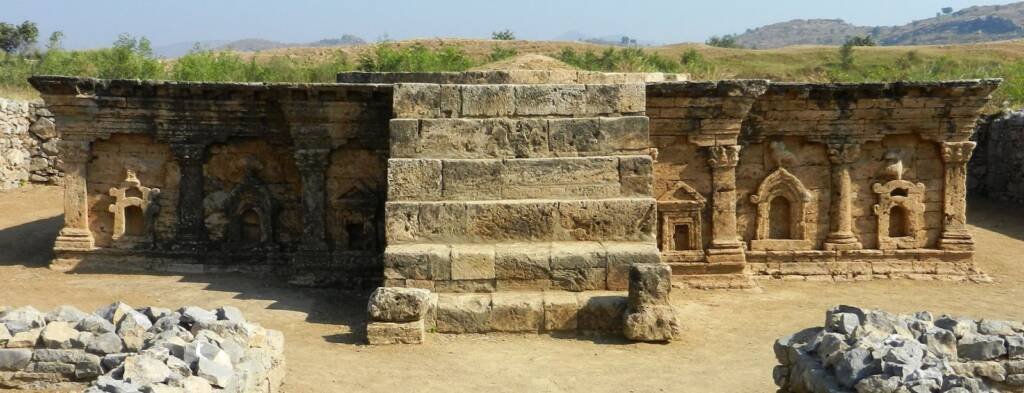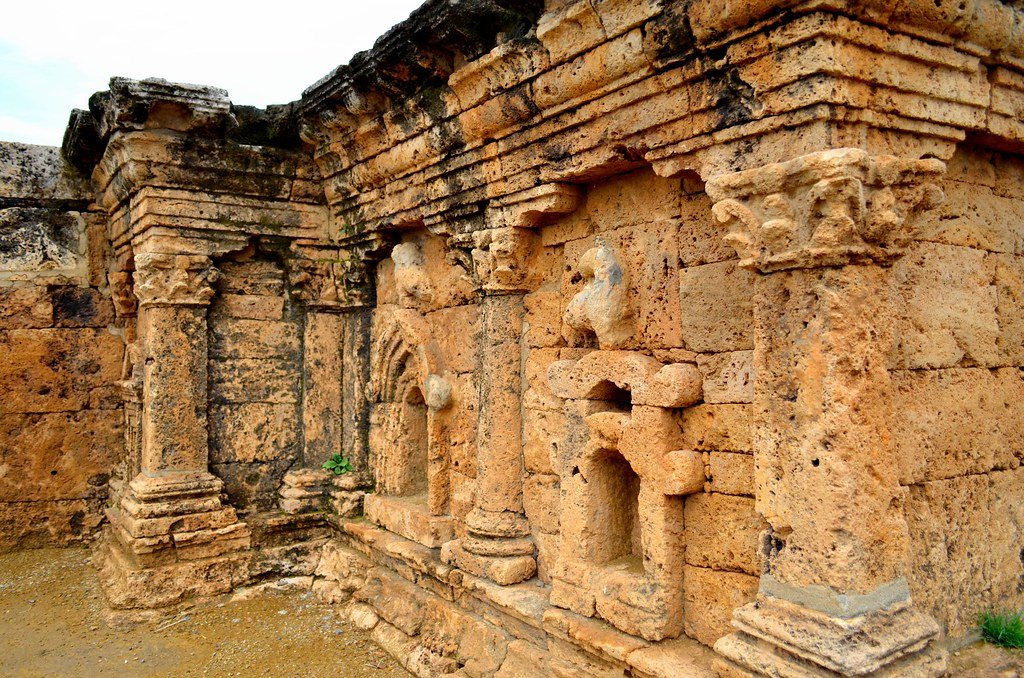Revisiting Centres of Learning That Once Attracted the World’s Finest Minds
In the fertile soil of Bharat’s civilisational consciousness, long before the rise of modern universities, bloomed two luminous beacons of knowledge — Nalanda and Takshashila. They were not mere academic institutions; they were sacred ecosystems of wisdom, shaping seekers into sages, scholars, and stewards of dharma. Their echo, though distant in time, still calls to our present — not as a nostalgic whisper, but as a resounding invocation to reclaim the sacredness of learning.
Takshashila: The Fountainhead of Global Scholarship
Nestled near the banks of the Sindhu, Takshashila emerged over 2,500 years ago as the world’s earliest known university — a confluence of minds drawn from across Asia and beyond. Here, students did not merely prepare for careers; they prepared for life. Under the shade of banyan trees and within the halls of thought, over 10,000 students studied 64 disciplines — from Ayurveda to Arthaśāstra, from Veda to Vāstu, from music to military science.
Takshashila’s pedagogy was rooted in freedom and dialogue. Learning was not a transaction — it was a tapas, a sacred pursuit. Teachers were gurus not because they held degrees, but because they lived the knowledge they imparted. Knowledge was not fragmented into isolated silos; it was interwoven, experiential, and deeply ethical.


Nalanda: The Mahavihara of Universal Wisdom
Centuries later, Nalanda rose like a phoenix of illumination in the heart of Magadha. It was not merely a university; it was a civilisational pilgrimage. With over 10,000 students and 2,000 teachers at its zenith, Nalanda became the intellectual heartbeat of Asia. Its libraries — Ratnasagara (Ocean of Jewels), Ratnodadhi (Sea of Jewels), and Ratnaranjaka (Delighter of Jewels) — housed scriptures and treatises so vast that they reportedly burned for months when destroyed by invaders.
But beyond its scale, what made Nalanda extraordinary was its spirit — an unwavering commitment to intellectual freedom, spiritual inquiry, and the integration of science, art, and metaphysics. Here, Chinese pilgrims like Xuanzang and Yijing did not just study — they transformed. And through them, Bharat’s light illuminated distant shores.
Education as a Sacred Yajña
What made these centres revered across continents was not their infrastructure, but their intent — they viewed education as a yajña, a sacred offering. Knowledge was not memorised for examination but internalised for elevation. Learning was not a ladder to status; it was a bridge to self-realisation and seva — service.
In these gurukulas and mahaviharas, the student was not a passive recipient but an adhikāri — a conscious participant in their own unfolding. Education was not about accumulation, but awakening.
Nalanda: A Ray of Light in the Ancient World
If Takshashila sowed the seeds, Nalanda (established around the 5th century CE in Bihar) was the flowering of Bharat’s educational vision. At its zenith, Nalanda hosted over 10,000 students and 2,000 teachers, all engaged in an intense pursuit of knowledge, reflection, and realization. It was a fully residential university with vast libraries, meditation halls, temples, lecture theatres, and beautifully landscaped gardens — a harmony of the outer and inner world.
Nalanda was not confined to Buddhist philosophy. It offered studies in logic, grammar, medicine, fine arts, mathematics, and metaphysics. Great minds like Aryabhata, Nagarjuna, and Xuanzang were shaped here. What made Nalanda extraordinary was not only its scale or curriculum — but the deep integration of scholarship with character, intellect with humility, and knowledge with compassion.
What Made These Centres Timeless?
Unlike today’s fragmented systems focused on output and metrics, these universities were grounded in the Upanishadic ideals of integral education — where knowledge (vidya) was for liberation (vimukti), not merely employment. Education was not transactional; it was transformational. Students were encouraged to question, reason, explore, and align intellect with ethics and action with awareness.
These institutions celebrated:
-
Experiential learning
-
Dialogue and debate as pedagogical tools
-
Gurus as spiritual guides, not just subject experts
-
Knowledge as a sacred pursuit, not a market commodity
The Tragedy of Erasure and the Urgency of Revival
The glory of these ancient centres was eventually extinguished by invasions and colonial rule. Libraries were burnt, systems dismantled, and the spirit of Bharatiya shiksha was suppressed in favour of rote and compliance. But memory lives on. Beneath the ruins lie whispers of a once-thriving civilization whose light still glows — waiting to be rekindled.
Today, our education system often resembles a machine — mechanical, uniform, outcome-obsessed. In chasing success, we have forgotten significance. We are producing graduates, but are we nurturing thinkers? Leaders? Visionaries?
Let us not allow our schools to become workshops of forgetfulness, churning out degrees and hollow achievements. Let them become sanctuaries of remembrance — of who we are, where we came from, and what we are meant to become.
A Mirror to Our Times
Today, as we navigate the noise of information and the fatigue of standardised schooling, the legacy of Nalanda and Takshashila offers not just pride, but purpose. The NEP 2020 speaks of holistic, value-based, and experiential education. But what do these truly mean if we do not draw from the very soil that first gave the world such models?
Experiential learning, multidisciplinary education, teacher autonomy, global citizenship rooted in cultural pride — these were not policy innovations; they were lived realities in ancient Bharat. In Nalanda and Takshashila, the physical, intellectual, and spiritual dimensions of the learner were not divided — they were integrated.
A Call to Remember and Reimagine
Let us not reduce our schools to assembly lines of instruction. Let us reawaken them as sanctuaries of remembrance — of who we are, where we come from, and what we stand for. Let our children not grow up strangers to their own civilisational identity.Let our classrooms be sanctuaries of curiosity, where questions breathe life into learning. But reviving the soul of Nalanda and Takshashila requires more than policy. It requires a paradigm shift.
We need:
-
Gurus who inspire, not instruct
-
Classrooms that invite exploration, not conformity
-
Curricula rooted in both jnana (knowledge) and viveka (discernment)
-
Learning spaces that blend the ancient with the modern, the spiritual with the scientific
For the ashes of Nalanda are not just symbols of destruction — they are sparks waiting to be rekindled. The stones of Takshashila do not merely belong to history — they are cornerstones for the future.
The Path Ahead
As educators, parents, and seekers, we must ask: Are we preparing our children for careers or for life? Are we transmitting data or igniting wisdom? Are we building resumes or nurturing rasa, the aesthetic, ethical, and existential depth that makes us truly human?
The memory of Nalanda and Takshashila is not a chapter to be studied — it is a flame to be carried. Let us walk in the footsteps of those who once taught under the skies, who read by the light of inner inquiry, and who saw knowledge as a sacred trust.
Let us not merely look back. Let us bring them forward — into our schools, our syllabi, our stories, and our souls.
For Bharat was never a land of the forgotten — it is a civilisation of the ever-awake.



